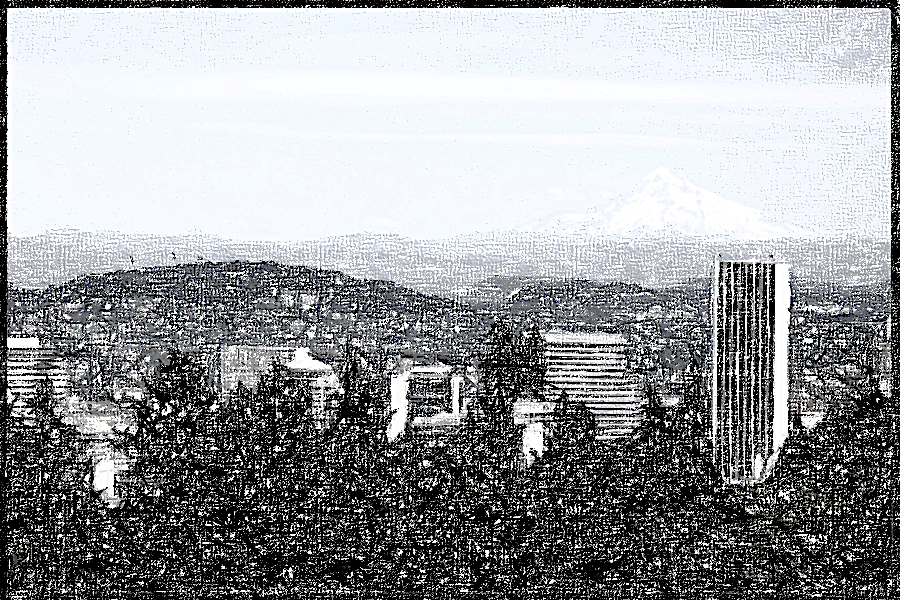As the Young Urban Leader Fellow 2012, I have the opportunity to study the metropolitan of Portland and the brilliance achieved by Portland Metro in planning, for the next two months. The intent of this fellowship is to take back some of the best practices in policy and planning in the United States and see how it could be applicable in the Indian context.
Urbanism is about designing a phenomenon that is constantly changing and policy is the framework you attach to this dynamic process. American urbanism is a very structured and regulated phenomenon, as we know it, with a very strong framework of policies. Indian cities are multi-faceted, complex, and regulation in its policies could give them a better framework to rest on.
Whereas, the American cities face a problem of lack of densities in their cores, Indian cities have congestion issues, mostly because of lack of infrastructure growth in the same pace as urbanization of the major cities. American urbanization was in some way dictated by the idea of “The American Dream”, where there was a hope for prosperity and happiness, symbolized by having a house of one’s own, and suggests a confident hope that one’s children’s economic and social conditions will be better than one’s own.
The Industrialization and World War II had a lot of effects on the way American cities turned out to be. A lot of freeways were built during the World War, which led to suburban sprawl away from the core.[i] This then dictated most of the way the American’s lived post World War. A few of the cities in the country try to limit the sprawling bug from killing the city cores early on in the game, one such city was Portland.
Coming from the land of sprawl[ii] – Los Angeles to the Rose City – Portland, the first thing that will strike anyone is how green the city and its neighborhoods are, and how short the distances are in comparison to the city that eats, walks and sleeps in its automobiles (Los Angeles).
The Irvington Neighborhood, where the fellow is placed during the length of the fellowship is predominantly a single-family neighborhood planned for upper/ middle class families and now placed under the National Register for Historic Places[iii] since 2010. If there had to be a comparable place in Bangalore, it would be Sadashivnagar or Jayanagar area.
Some of the features that make Portland a city revered by planners in the United States, is its intensively connected transit system, the recycling policy for better waste management and to reduce landfills, urban design interventions on streets and in the form of plazas and pocket open spaces throughtout the City and its progressive planning approaches earlier on in the race of sustainability and growth.
The City is known for its Public transit system (TriMet is the primary transit provider with their buses and MAX light rail systems, supplemented by the Portland Streetcar in downtown Portland). Entering into a very vibrant downtown during lunch time, the sight is of people coming out of their offices, to get their palate satiated with Portland’s “Cartopia”, the city’s very own food cart pod (a fleet of food carts in a parking lot is called a food cart pod) culture – hundreds of food carts are set up all around the city’s parking lots. The downtown is abuzz with activity, aroma of food, music and well-connected transit, which drives many into the heart of the city. The downtown internally works efficiently due to dense transit connectivity.
Some of the features that supplement the transit system are:
- SmartPark are City-owned parking garages in downtown Portland that provide affordable parking, it also partners with some downtown businesses to offer validated parking with qualifying purchases.
- The Pioneer Courthouse Square, known, as the living room of the City is a parking structure converted into an urban park and square, this was followed by Director Park, which was also converted into a public square in 2009 from a parking lot.
Subsidized parking lots and interactive urban plazas/open spaces are the best way to supplement a good transit system in downtowns and dense urban cores. Not only do the parking lots incentivize people to come and shop in downtown (increasing the economic value of the space), the urban plazas and open spaces give the much-needed breathing space within the density (giving the space an urban design and aesthetic value).
Portland’s win was really, during the 1970’s when they had the foresight of rejecting investments in building massive freeways (Robert Moses [iv]plan for Portland) that would cut across neighborhoods and instead used that money to retain the pedestrian friendly neighborhoods, to connect the city using good public transit (light rails, streetcars and buses).
Through this discussion, the point was to make the readers aware as to how India can leapfrog development by learning from some of the mistakes Americans and other western cities have committed during their period of rapid industrialization and urbanization and avoid them as we step into an era where good investments can go into good infrastructure improvements.
[i] The Story Of Sprawl: How Cars Ate America, Watch the video by Planetizen, with commentary by Andrés Duany, Elizabeth Plater-Zyberk, John Norquist, Neal Peirce, James Howard Kunstler and Robert Cervero: http://www.streetsblog.org/2009/04/21/new-video-series-tells-the-story-of-sprawl/
[ii] Sprawl (Urban) is a phenomenon of haphazard growth and expansion of low density development outside a City (auto-dependent development)
[iii] National Register for Historic Places is an official list of the Nation’s historic places worthy of preservation, authorized by the National Historic Preservation Act of 1966. Source: http://www.nps.gov/nr/
[iv] Robert Moses was a master builder of the mid-20th century whose advocacy of highways over public transit helped create the modern suburbs of Long Island and his ideologies were seen profitable to run the economy during the great depression of the 1930. Article: http://www.wweek.com/portland/article-4212-highway_to_hell.html



